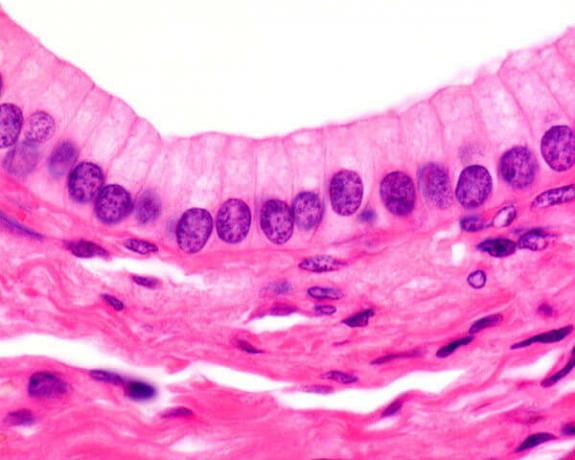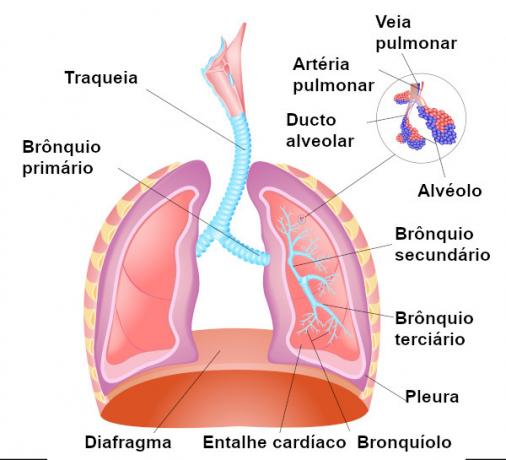THE embryogenesis it is the process in which the zygote develops to form a new individual. It can be divided into three main phases: segmentation, gastrulation and organogenesis. It is during the gastrulation phase that the formation of germinal leaflets, also called embryonic leaflets, occurs.
During gastrulation, the blastula cells begin to differentiate, forming the germinal layers: ectoderm, mesoderm and endoderm. They are the beginnings of all tissues and organs.
We can classify animals into diblastic and triblastic according to the number of leaflets. Diblastic animals are those that have only two, the ectoderm and the endoderm. Triblastic animals, on the other hand, are those that have three germinative leaflets: ectoderm, mesoderm and endoderm. You cnidarians are examples of diblastic animals and the corded are examples of triblastic animals.
Ectoderm is the outermost leaflet (ecto = outside) and that coats the embryo. It will give rise to the central nervous system (CNS), peripheral nervous system (PNS), epidermis and associated structures such as hair and nails, sebaceous and sweat glands. It will also form the mammary glands, the pituitary, the meninges, among others.
Do not stop now... There's more after the advertising ;)
Mesoderm is the intermediate germinal leaflet (meso = middle), lies between the ectoderm and the endoderm. It will give rise to cartilage, bones, muscles, cardiovascular system (heart, blood vessels and the own blood), ovaries, testicles, urinary system (kidneys, bladder and urinary tract), among others organs.
The mesoderm develops in the neurula stage and fills all the spaces between the ectoderm and the endoderm. According to its location, we can classify the mesoderm into: epimer (located on the back of the embryo), mesomer (located on the side of the embryo) and hypomer (located on the ventral region of the embryo).
Finally, we have the endoderm, the innermost leaflet (endo = inside). It will give rise to the epithelial lining of the gastrointestinal and respiratory tracts, glands salivary, bladder epithelium and part of the urethra, thyroid and parathyroid glands, thymus, liver and pancreas.
As stated earlier, these leaflets appear in the gastrula stage. In the neurula stage, they initiate the formation of different tissues and organs.
by Vanessa dos Santos
Graduated in Biology
Would you like to reference this text in a school or academic work? Look:
SANTOS, Vanessa Sardinha dos. "Germ leaflets"; Brazil School. Available in: https://brasilescola.uol.com.br/biologia/folhetos-germinativos.htm. Accessed on June 27, 2021.
Biology

Learn more about epithelial tissue, one of the tissues in the human body. In this text, we will talk about epithelial tissues, their main characteristics and functions. We will also address the classification of epithelia and resolve two questions on vestibular that address this important issue.

